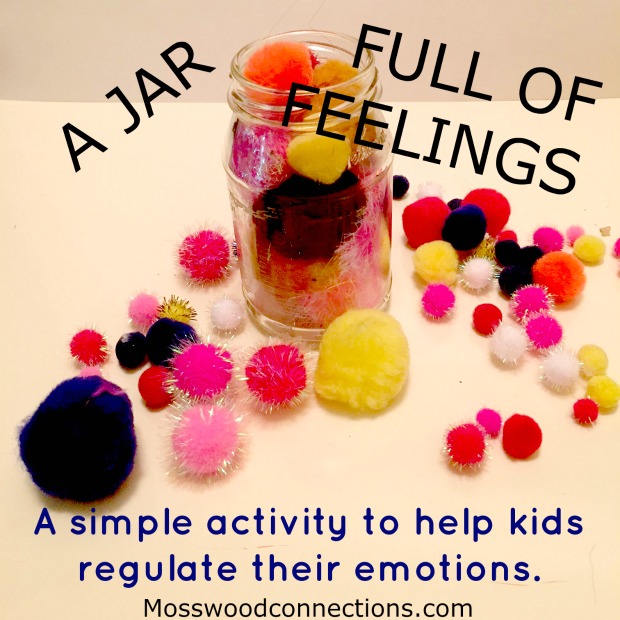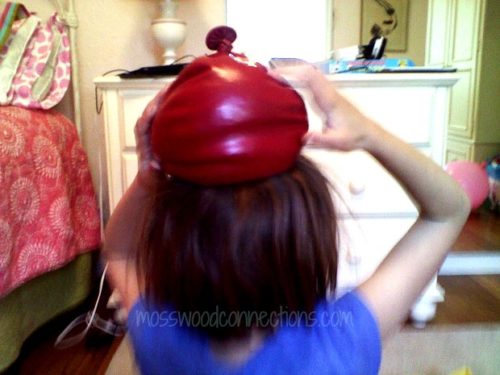Balloon Pass
Sensory Processing
A Tactile Sensory Processing and Directionality Activity
Here is a fun tactile sensory processing activity that works on directionality and tactile discrimination. It is a fun game where the children have to think quickly, pay attention and respond to what they feel or hear. Gather a group of children, put on some music, fill up a few balloons and let the learning begin! The idea of this game is to have the children pass the balloons left or right depending on what they feel.
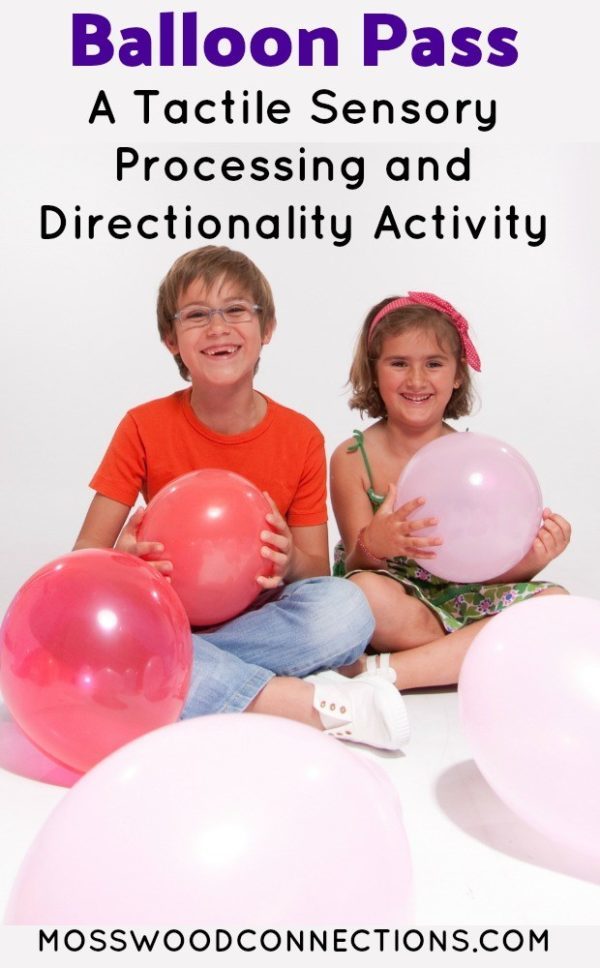
Balloon Pass: A Tactile Sensory Processing and Directionality Activity
If you have stopped by our website before you may know that I love balloon games. There are so many ways to play with them, you are only limited by your creativity. We thought of this directionality activity when we were trying to teach “left” and right”. To make it more engaging for the kids we added in a tactile sensory processing activity to the game.
Target Skills for this tactile sensory processing activity:
- Directionality
- Observational Skills
- Sensory (tactile discrimination)
- Response Time
Materials You Need to Play Balloon Pass:
- 2 balloons
- Hot and Ice Cold Water
- Beans or Rice or whatever you have around to put in the balloons (optional)
Instructions for Balloon Pass: A Tactile Sensory Processing and Directionality Activity:
- Fill one balloon with very warm water and one with ice cold water.
- Have the children sit in a circle. Give them the balloons.
Tell the children: “When you feel the warm balloon pass it to the person on your left. When you feel the cold balloon pass it to the person on your right”. - You can have them pass the balloon to match the speed of the music which would work on co-regulation skills.
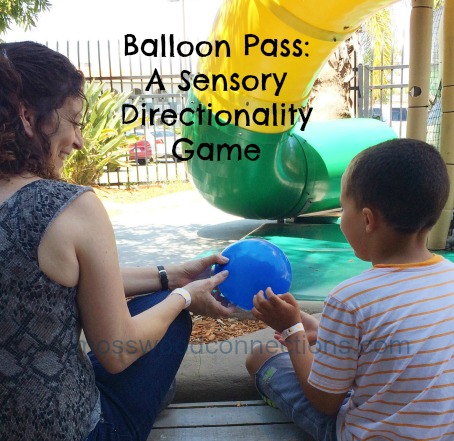
Auditory Version of Balloon Pass: A Tactile Sensory Processing and Directionality Activity:
- Put rice in one balloon and beans or marbles in the other.
Demonstrate how each one sounds. - Tell the children: “When you hear the rice balloon pass it to the person on your left. When you hear the beans balloon pass it to the person on your right”
- You can also draw shapes or letters on the balloons to work on shape or letter recognition.
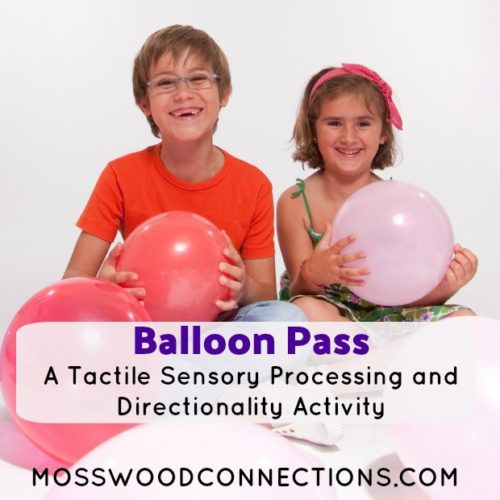
What Are Laterality and Directionality?
"Laterality refers to the two sides of the body. Children must develop an internal awareness that their bodies are composed of two sides (the right and the left) in order to plan and execute specific movements in a given direction. In fact, the development of this internal awareness of laterality is thought to both precede and underlie the development of directionality, according to Carl Gabbard, Ph.D., professor of kinesiology at Texas A&M University. In other words, children who have a difficult time developing laterality will be at risk for developing a well-integrated sense of directionality or directional awareness.
Directionality, then, is simply the application of the concept of laterality to the external world. “If I have a left and a right, then other things can have a left and a right and I can move to the left or the right of those things.” Simply put, directionality is what helps children understand the space around them in the everyday world. It helps them identify where things are and understand where they themselves are in relationship to those things. 'Look, Miss Kristi, I can stand on top of the slide!' 'I see Laurel; she’s hiding behind the chair.' ” (Dr. Eric Strickland Ph.D.)
MORE LISTENING AND SENSORY ACTIVITIES:
Be All Ears Bean Bag Toss Auditory Processing & Listening to Directions Activity
A Jar Full of Feelings: Sensory Regulation Activity
Squishy Squashy Sensory Balloon Games: A fun activity for engaging sensory seeking children!


